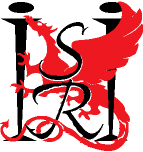
Institute for Software Research International
School of Computer Science, Carnegie Mellon University
Response Surface Methodology
Kathleen M. Carley, Natalia Y. Kamneva, Jeff Reminga
October 2004
Institute for Software Research International (ISRI)
Center for Computational Analaysis of Social and Organizational Systems (CASOS)
CMU-ISRI-04-136.ps
CMU-ISRI-04-136.pdf
There is a problem faced by experimenters in many technical fields, where,
in general, the response variable of interest is y and there is a set
of predictor variables x1 , x2 , …, xk .
For example, in Dynamic Network Analysis (DNA) Response Surface Methodology
(RSM) might be useful for sensitivity analysis of various DNA measures
for different kinds of random graphs and errors.
In Social Network Problems usually the underlying mechanism is not fully understood, and the experimenter must approximate the unknown function g with appropriate empirical model y = ƒ( x1 , x2 , …, xk ) + ε, where the term ε represents the error in the system.
Usually the function f is a first-order or second-order polynomial. This empirical model is called a response surface model.
Identifying and fitting from experimental data an appropriate response surface model requires some use of statistical experimental design fundamentals, regression modeling techniques, and optimization methods. All three of these topics are usually combined into Response Surface Methodology (RSM).
Also the experimenter may encounter situations where the full model may not be appropriate. Then variable selection or model-building techniques may be used to identify the best subset of regressors to include in a regression model. In our approach we use the simulated annealing method of optimization for searching the best subset of regressors. In some response surface experiments, there can be one or more near-linear dependences among regressor variables in the model. Regression model builders refer to this as multicollinearity among the regressors. Multicollinearity can have serious effects on the estimates of the model parameters and on the general applicability of the final model.
The RSM is also extremely useful as an automated tool for model calibration and validation especially for modern computational multi-agent large-scale social-networks systems that are becoming heavily used in modeling and simulation of complex social networks.
The RSM can be integrated in many large-scale simulation systems such as BioWar, ORA and is currently integrating in Vista, Construct, and DyNet.
This report describes the theoretical approach for solving of these problems and the implementation of chosen methods.
31 pages
Return to:
SCS Technical Report Collection This page maintained by reports@cs.cmu.edu
School of Computer Science homepage